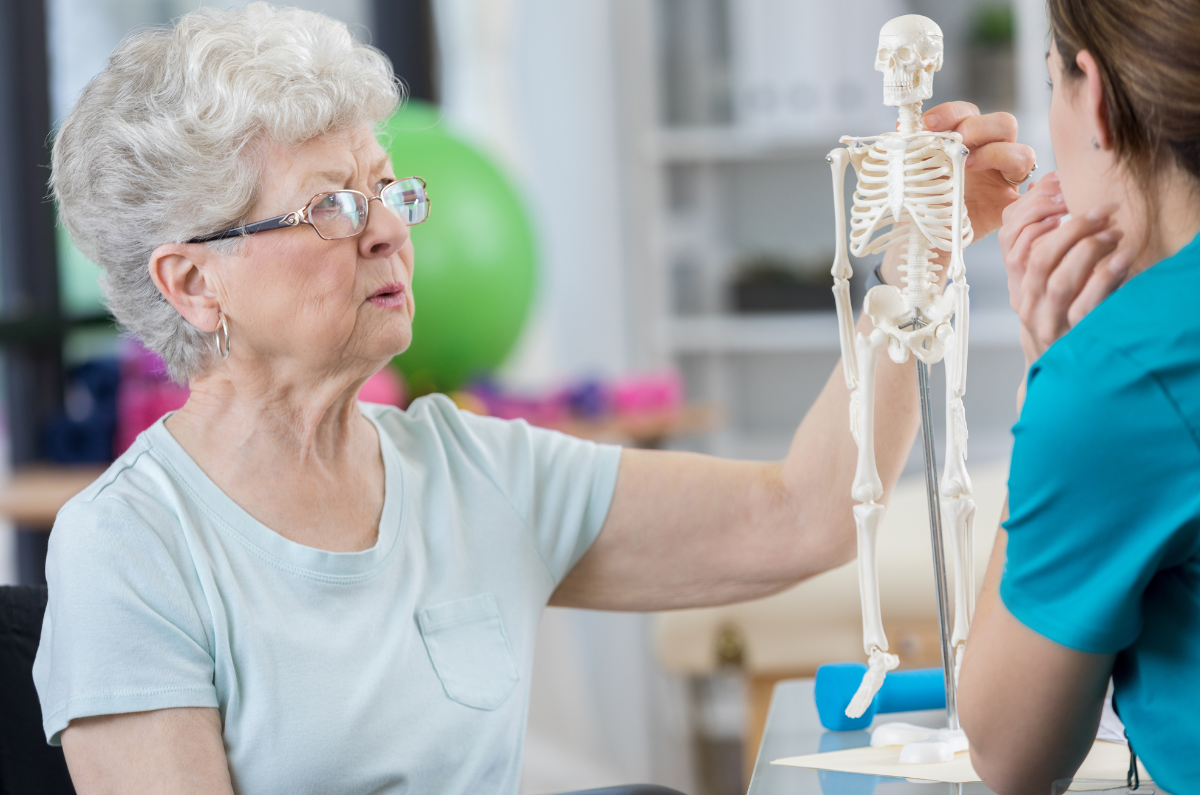Osteosarcopenia: A hidden health concern
December 10, 2024 by Musculoskeletal Health Australia

Osteosarcopenia (os-tee-oh-sar-koh-pee-nee-uh) is a term used to describe the combined effects of two common age-related health conditions: osteoporosis (os·te·o·po·ro·sis) and sarcopenia (sar·co·pe·nia). Osteoporosis weakens bones, increasing the risk of fractures, while sarcopenia involves the gradual loss of muscle mass, strength, and function. When these two conditions occur together, they worsen each other, leading to a higher risk of disability, falls, and poor health outcomes.
- Osteoporosis: A condition where bones lose strength and density, making them more susceptible to fractures, often without symptoms until a bone breaks. It’s most common in older adults, especially women after menopause.
- Sarcopenia: The gradual loss of muscle mass and strength that happens with age. It makes everyday tasks, like walking or lifting objects, more difficult and reduces mobility and independence.
Why osteoporosis and sarcopenia can occur together:
- Hormonal Changes: as we age, hormone levels drop, affecting both bone density and muscle strength. For example, women’s estrogen levels decrease after menopause, leading to bone loss, while testosterone drops in men, affecting both muscles and bones.
- Inflammation: low-grade inflammation, common in ageing, can damage both bones and muscles, contributing to osteoporosis and sarcopenia.
- Poor nutrition: not getting enough essential nutrients, like protein, calcium, and vitamin D, can harm both bones and muscles.
- Lack of physical activity: insufficient exercise weakens bones and muscles. Weight-bearing and strength exercises are crucial for maintaining both bone and muscle health.
- Impaired mobility: people are more likely to fall and break a bone as muscle strength decreases. After a fracture, reduced mobility accelerates muscle loss, creating a dangerous cycle.
The risk of osteosarcopenia increases with:
- Age: the older we get, the higher the risk
- Gender: women, especially after menopause, are at higher risk, when bone density may decline by up to 3% per year and muscle mass by approximately 0.6% per year
- Genetics: a family history of osteoporosis or sarcopenia increases the likelihood of developing these conditions
- Chronic health conditions: diseases like diabetes, heart disease, and arthritis can contribute to both conditions
- Lifestyle choices: poor diet, lack of exercise, smoking, and excessive alcohol intake are all risk factors.
Osteosarcopenia can lead to:
- Fractures: weakened bones increase the likelihood of fractures, and weak muscles make it harder to recover from falls
- Loss of independence: with decreased muscle strength and weaker bones, people may struggle with daily tasks, leading to a need for assistance
- Disability: over time, loss of bone and muscle strength can limit mobility and make normal activities difficult.
The good news is that osteosarcopenia can be managed with early detection and the right approach. Treatment can include:
- Healthy diet: a diet rich in protein, calcium, and vitamin D is crucial for maintaining bone and muscle health. Supplements may be needed for some people
- Exercise: weight-bearing and strength-training exercises are vital for maintaining bone density and muscle mass, as well as improving balance to prevent falls
- Medications: doctors may recommend treatments for bone strength, such as calcium and vitamin D supplements or stronger osteoporosis medications. While treatments for sarcopenia exist, more research is needed to find optimal solutions.
- Fall prevention: exercises to improve balance, using walking aids if needed, and ensuring the home environment is safe can help reduce the risk of falls
- Team-based care: managing osteosarcopenia often requires a collaborative approach involving doctors, physical therapists, nutritionists, and occupational therapists.
Osteosarcopenia is a growing concern, but its effects can be minimised with proper management. Eating well, staying active, and seeking medical help early are key to maintaining bone and muscle health, which can significantly improve quality of life as we age.








